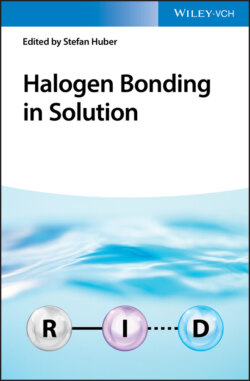Читать книгу Halogen Bonding in Solution - Группа авторов - Страница 26
1.4 Computational Studies 1.4.1 Introduction
ОглавлениеComputational chemistry has proven valuable to understanding the fundamental nature of the halogen bond and frequently complements observed experimental data. Computational studies have shown that different components (e.g. charge transfer, electrostatics, dispersion) contribute to the interaction and that the relative makeup depends on the nature of the halogen bond donor (e.g. inorganic, organic, neutral, charged assisted) and acceptor (e.g. neutral, charged, soft or hard Lewis base). In this section, the forces contributing to the halogen bond interaction and an overview of in silico methods used to study the halogen bond will be surveyed. For an in‐depth look, reviews on computational halogen bonding theory in small molecule [8,129,130] and biological [131] systems have been published. Additionally, techniques to study the halogen bond (and other σ‐hole interactions) in silico have been reviewed by Kozuch and Bickelhaupt [132] and Hobza [133].
